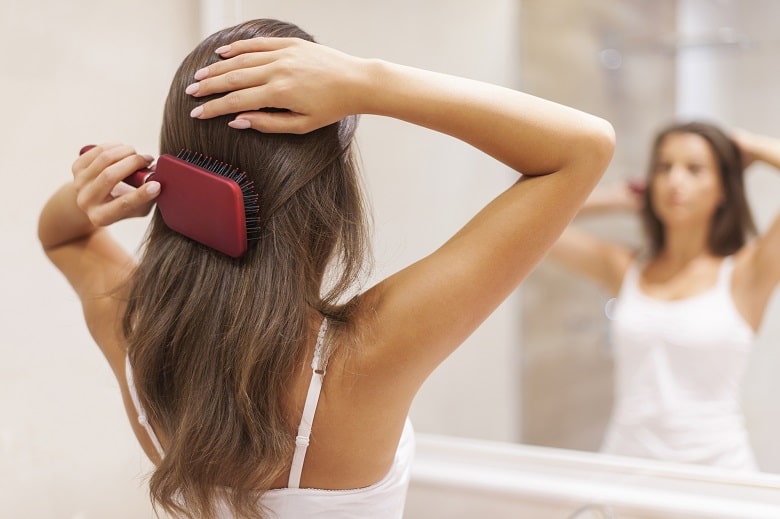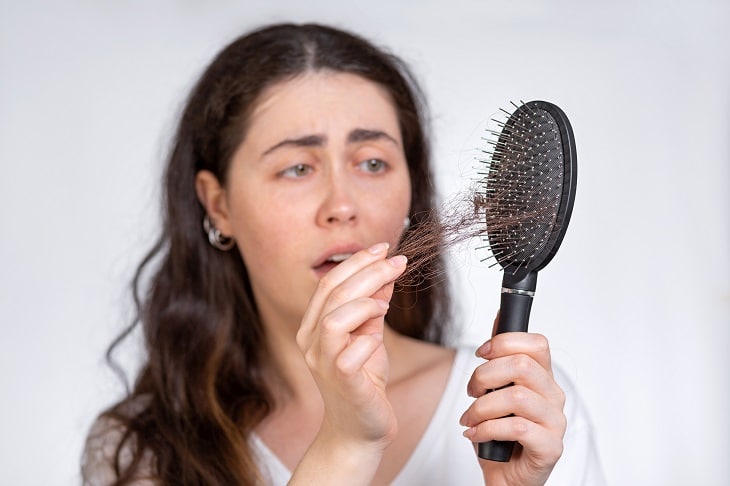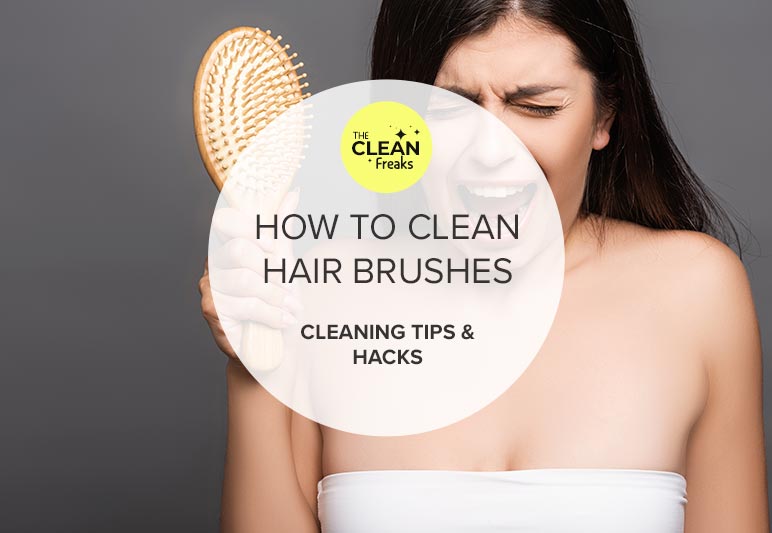We all love to pamper our hair; getting a cut, braiding, brushing in different styles, coloring and so on. But the task of cleaning your hairbrush is not so much fun. But it definitely needs to be part of your hair care routine.
Hairbrushes collect lots of dirt and dead skin when grooming hair, and when this dirt is left to build up, it may cause an infection to the scalp. To avoid such conditions, you need to make it a routine to clean your hairbrushes often.
Before we get to the instructions on how to clean your hair brush properly, let’s first talk some more about why it’s important to keep your hair brushes clean.
Why do you need to clean your Hairbrushes often?

First of all, it is hygienic! Just the way you’d consider cleaning hair and other dirt on the floors, so should you keep your equipment clean. In other words, anything that you use on your skin or hair needs frequent cleaning and disinfection. The build-up of dirt and dead skin is a perfect breeding ground for bacteria and cleaning keeps them at bay!
If you are using a dirty hair brush, you are literally brushing that dirt into your hair. Yuck! Cleaning your brushes leaves your hair looking fabulous because a hairbrush covered with strands of hair, dirt and oil will only leave that dirt into your hair, making it look greasy and unpleasant.
Hairbrushes catch lint quite quickly because you use them daily; brushing and styling your hair. It’s crazy how those little fuzzies collect on the bristles. Did they have a meeting with the lint balls from our pockets?
Additionally, the styling products you you use on your hair, and that includes natural hair oils, build up on your brush over time. And of course, when brushing your hair, strands of hair get stuck on your brush, which makes your hairbrush dirty and clogged with hair. When these strands of hair are left to accumulate in the brush, it becomes hard to groom your hair effectively.
It is recommended to clean your hairbrushes every two weeks, using the tips below. However, if you use more products on your hair on a daily basis (especially hair spray which acts like glue on a bush), then wash your brushes every week.
A hairbrush is a personal tool that requires tender care and should be kept clean just like your towels, bedding and clothes. Make it a routine to clean your brushes to keep them safe from bacteria that may be easily transferred to your hair.
Think about what would happen if you washed your hair then took a brush that you have used on your unwashed hair to brush your clean hair. How would that feel? It would mean mixing the dirt on your brush with your nicely washed hair. That’s kind of defeating the purpose, isn’t it? And it’s one of the main reasons why you need to clean your hairbrushes often.
Have you ever brushed your hair and noticed some white particles falling off your scalp or lingering on your hair? While there are many caused for dandruff, this is one of the cues that your hair brushes need a wash — especially if it has been a while.
Using cold water to wash your brushes may not kill all the germs, and especially will not remove the oil build-up. Therefore, use warm water and either antibacterial soap or one of the DIY disinfectants we discuss below to wash your brushes, and rinse in cold water. Repeat the process until your brushes are clean, then allow them to dry completely before storage.
Additionally, it is ideally recommended not to share your brush as you may not know what’s in the other person’s hair that may be transferred to yours. You don’t want to spend a lot of money treating scalp conditions, so keep your hairbrushes clean at all times!
Okay, now it’s time to get to the nitty gritty — how to get rid of embedded hair, dirt, and cleaning product buildup from your hair brushes!
Steps to Follow for How to Clean A HairBrush

When it comes to cleaning tips, it all starts with a plan and a process to follow. Make sure you follow these steps to ensure you have spotless and sanitary hair brushes — and healthy hair!
Pick Out Hair from the Brush
When brushing your hair, strands of hair usually get stuck on the tooth of your brush. The first step to cleaning your brush is by removing those strands of hair either by hand or a toothpick. You can also use another comb to pick out hair from the bristles of your hairbrush.
Or, if you want to make the job even easier, there are specially designed hair brush cleaning tools that easily get between the bristles. Repeat this process until all hair is removed.
If you have long hair that sheds a lot, you can actually get heat resistant nets that fit over your hair brush. Then when it’s time to clean away the hair, you simply pull it off! They are washable and reusable too. These make the task of removing hair much easier.
Pro Tip: It is advisable to clean your brushes in the bathroom sink rather than the kitchen sink because loose hair may find their way into your food, and that is a health hazard.
Soak Your Brushes
As mentioned earlier, a build-up of dirt on your hairbrush is a perfect breeding point for germs that may cause infections. Therefore, disinfecting your brushes is vital.
Once all hair is removed, soak your brushes in warm, salty water. In place of salt, you can use vinegar or baking soda. The warm water is used to melt hair oil that may have built upon the brush while vinegar, salt or baking soda serves the purpose of disinfecting the brush.
Pro Tip: If you have either wooden or cushioned brushes, do not soak them because they get eroded fast when they come into contact with water. A wooden brush, on the other hand, will absorb water, swell and break, causing damage to your combs and forcing you to buy a new set.
Scrub Your Brush
Once your brushes are well soaked, reach for an old toothbrush. You may want to use a special hair brush cleaner designed to clean without damaging bristles (they work on combs too).
Apply a little amount of hair shampoo or antibacterial hand soap on the toothbrush and scrub between the bristles of your hairbrush. Gently scrub away the dirt, oil and decors from your hairbrush.
If you use a lot of hair styling products (or need to get hair dye out of brushes and combs), you can also use Ship-Shape Comb and Brush Cleaner. The formula is used by hair care professionals and not only cleans in minutes, but it also helps to prolong the life of your hair brush.
Rinse the brush and repeat the process if needed, to ensure all the dirt is scrubbed off.
Pro Tip: For brushes with wooden parts, make sure you use as little water as possible to avoid the wood soaking up the water and damaging your brush.
Dry Your Brush
How you dry your brush depends on the weather and also the type of comb. The weather has a direct effect on your brushes. During the cold season, you can put your brushes outside to dry after patting dry using a clean, dry towel, and during summer, however, because of high temperatures, placing your brushes under direct sunlight may cause damage to them. Therefore, pat dry with a towel and put them face down, allowing them to dry overnight.
Pro Tip: For plastic brushes, place them face down and let them dry. For brushes with fabric padding, use a hairdryer to avoid molds. If your hairbrush has wood or natural bristles, leave them to dry overnight.

And there you have it, everything you need to know to keep your hair brushes clean.
Make your hair brushes part of your routine cleaning schedule. Your hair will thank you for it!

